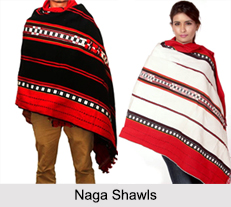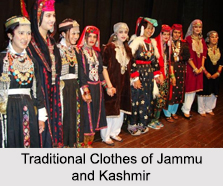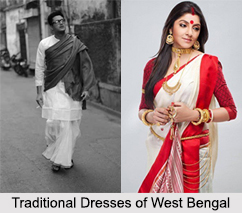 Naga Shawls are the most distinctive and famous within in India and all over the world. Naga Shawls are not mere wrap against cold they are highly symbolic and are the traditional dress of Nagaland. They are a part of every celebration. They have a distinctive pattern that is primarily red and black in colour. They are worn by various Naga tribes. There are around 16 tribes in Nagaland and each has its own distinctive design and colour combination.
Naga Shawls are the most distinctive and famous within in India and all over the world. Naga Shawls are not mere wrap against cold they are highly symbolic and are the traditional dress of Nagaland. They are a part of every celebration. They have a distinctive pattern that is primarily red and black in colour. They are worn by various Naga tribes. There are around 16 tribes in Nagaland and each has its own distinctive design and colour combination.
Weaving of Naga Shawls
Naga shawl are made with narrow loin looms. The shawls are woven with a rayon weft and weaving is done mostly with cotton. The shawl is beautified with figures woven on the centre such as elephants, tigers, cocks and circles, representing human heads.
Naga Shawls are mostly made of red and black wool. These shawls are famous for their unique designs and motifs. They have distinctive patterns with traditional design motifs including simple clean lines, stripes, squares and bands.
Types of Nagaland Shawls
Naga Shawls are available in a vast variety. It varies on the basis of the design and the tribes using them. Some of them are as follows:
Tsungkotepsu Shawl: It is the characteristic cloth of Ao tribe and is woven on a dark base. It signifies affluence of the owner, and the depictions of elephant and tiger speaks of the courage of the concerned man, while the human head attests accomplishment in head-hunting and other tasks like wielding spear and dao.
Rongsu Shawl: It is one of the most decorative shawls worn by the Ao tribes and is mainly a male shawl. It is wearable only by those who have a glorious heritage of Mithun sacrifice, committed by the forefathers and also by the individual himself.
Angami Naga Shawl: This is a black shawl with thick bold embroidered animal motifs. It is mainly worn by the warriors of Angami tribe.
Supong: It is a worn by the Sangtam tribe and used by the rich people.
Rongkhim: Rongkhim is a fantastic shawl, wearable by a venerated warrior only. This is the most beautiful shawls worn by Yimchunger Naga tribe. It is red and black with narrow grey bands at the two edges. There is a wide spectrum of shawls woven by the Yimchunger Nagas.
Tsungrem Khim: It"s an exclusive female shawl. The exotic shawl Tsungrem Khim is an asset for the Yimchunger Naga women.
Lotha Shawls: Worn by the Lotha tribe, this Naga shawl has several patterns.





















